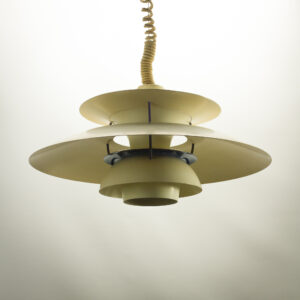60s Boomerang floating desk for Tijsseling
The history of the Tijsseling family begins in Barneveld, the Netherlands. Hermanus Jacobus Tijsseling starts making organs and furniture in 1894. The company needed larger premises and therefore moved to Nijkerk. Close to water and railway tracks for the supply of materials. In 1930s Tijsseling opened her factory in Nijkerk. Furniture was made in the factory, but also incubators. During the war years, the factory and the family, of course, had a hard time. But also had a function to provide doctors in the region with electricity. Yet the factory and especially the family survived the war. The main focus of the company was making classic furniture. Tijsseling also supplied hotels and cinemas. The backs of cinema seats were made of plywood, which was bent into the shape of a back by high-frequency machines in heated molds. The backrests were, as it were, spit out. Everything was made in-house, from buttoning cushions, to padding and upholstering. Employees were trained in the business school. Tijsseling was very progressive in its personnel policy at the time. There was a company fire brigade, a shooting club, a football club and a Tijsseling walking club. In its heyday, the factory employed 250 people. The tree trunks from which the furniture and plywood were made entered the factory in their entirety, after which they were made suitable for processing in drying rooms and steam pits. That resulted in some nice playing material. There were large piles of wood in the sheds. In the 50s and 60s came a number of successful years culminating in various leading modern furniture designs in teak and even in veneer, which were very successful at the time and have now become collector items. In 1981 the family had had enough with regard to building plans and tug-of-war over location and certainly also the increasing cost of materials. The family decided to close the factory.
This desk is often estimated as a Cees Braakman design for Pastoe, but it is entirely Tijsseling. It has 3 drawers on the right and a door on the left with 2 plywood open drawers behind. A very nice detail is the white lacquered curved wooden bookshelf at the back. The desk is supported by 4 V-shaped chromed legs. The desk is made of teak and is in good condition consistent with age and use.











